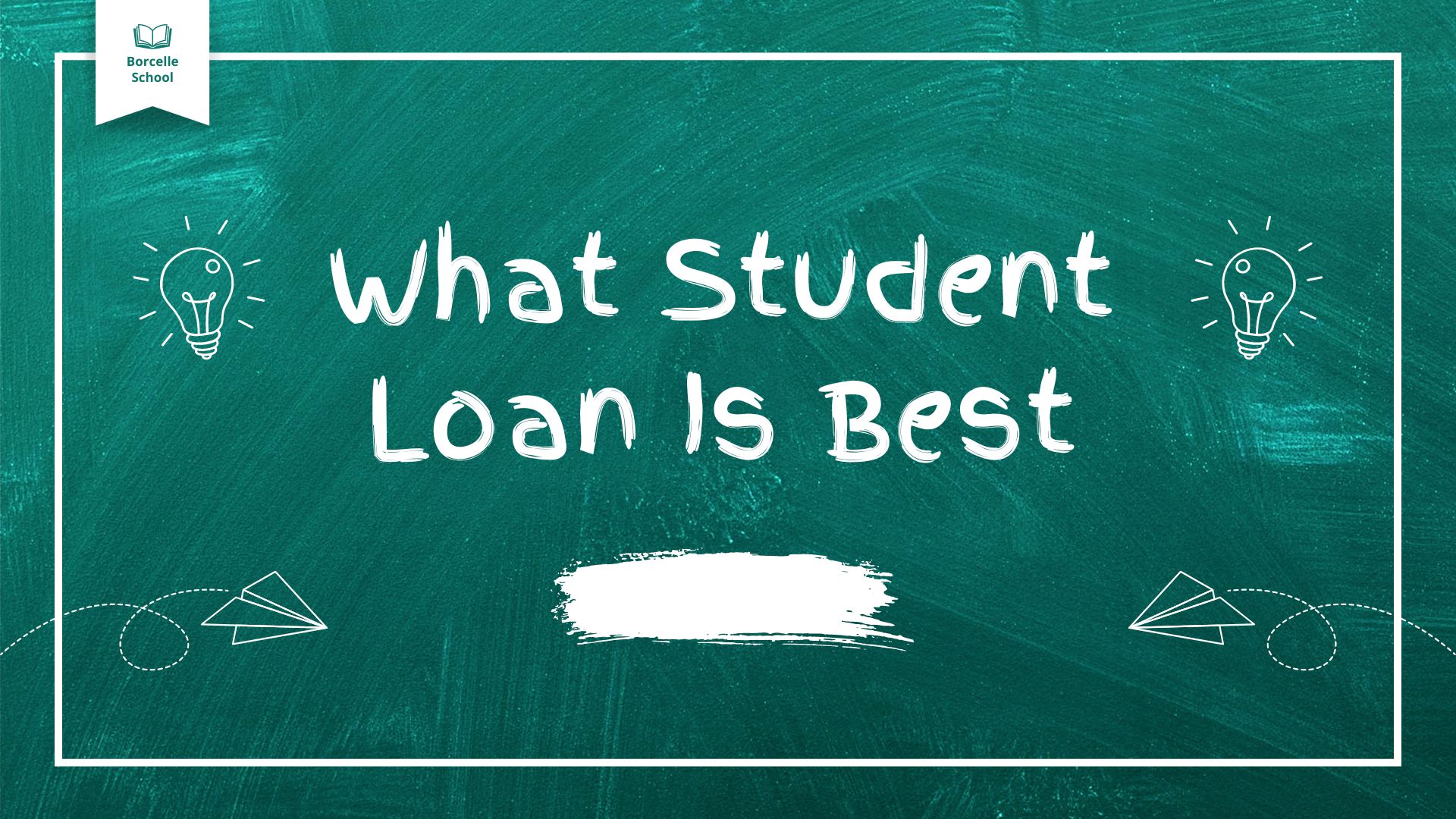Choosing the best student loan involves considering multiple factors, including interest rates, repayment options, eligibility requirements, and the specific needs of the borrower. Here’s a comprehensive guide to help you understand and select the best student loan for your situation.
Advertisements
Understanding Student Loans
Student loans are financial instruments designed to help students pay for post-secondary education and associated fees, such as tuition, books, and living expenses. They can come from the federal government, private institutions, or state organizations.
Types of Student Loans
1. Federal Student Loans
Advertisements
Direct Subsidized Loans: For undergraduate students with financial need. The government pays the interest while you’re in school at least half-time, during the grace period, and during deferment periods.
Direct Unsubsidized Loans: Available to undergraduate, graduate, and professional students. Financial need is not required. Interest accrues during all periods.
Direct PLUS Loans: For graduate or professional students and parents of dependent undergraduate students. Requires a credit check.
Perkins Loans: For students with exceptional financial need, though this program is being phased out.
2. Private Student Loans
Offered by private lenders such as banks, credit unions, and state-based or state-affiliated organizations. They often require a credit check and a co-signer.
3. State-Specific Loans
Some states offer student loan programs with favorable terms for residents or students attending in-state schools.
Factors to Consider When Choosing a Student Loan
Interest Rates
Fixed vs. Variable Rates: Federal student loans typically have fixed interest rates, which remain constant over the life of the loan. Private student loans may offer both fixed and variable rates. Variable rates can start lower but may increase over time.
Current Interest Rates: Compare current rates for both federal and private loans. Federal loan rates are set by Congress, while private loan rates depend on market conditions and creditworthiness.
Repayment Options
Federal Loans: Offer multiple repayment plans, including standard, graduated, extended, and income-driven repayment plans. These plans can be tailored to your income and family size.
Private Loans: Repayment options vary by lender. Some may offer flexible repayment terms, but many do not have the same protections as federal loans.
Eligibility and Requirements
Credit Check: Federal loans (except PLUS loans) do not require a credit check. Private loans generally require a credit check and may require a cosigner.
Financial Need: Some federal loans, like Direct Subsidized Loans, require proof of financial need. Private loans are typically based on creditworthiness.
Benefits and Protections
Forgiveness Programs: Federal loans offer various forgiveness programs, such as Public Service Loan Forgiveness (PSLF) and Teacher Loan Forgiveness.
Deferment and Forbearance: Federal loans provide options to temporarily postpone or reduce payments. Private lenders may offer limited deferment options.
Loan Amounts and Limits
Federal Loans: Have annual and aggregate limits on how much you can borrow. These limits depend on your year in school and whether you are a dependent or independent student.
Private Loans: Typically allow you to borrow up to the cost of attendance minus any other financial aid received. However, borrowing limits can vary widely by lender.
Comparing Federal and Private Loans
Federal Loans
Advantages:
– Lower fixed interest rates.
– Multiple repayment options.
– Loan forgiveness and discharge options.
– No credit check (except for PLUS loans).
Disadvantages:
– Borrowing limits may not cover the full cost of attendance.
– Subsidized loans are only available for undergraduates.
Private Loans
Advantages:
– Can cover the full cost of attendance.
– May offer lower initial variable rates for borrowers with excellent credit.
– No borrowing limits beyond the cost of attendance.
Disadvantages:
– Generally require a credit check and cosigner.
– Fewer repayment options and protections.
– Interest rates may be higher, especially for borrowers with poor credit.
Steps to Choose the Best Student Loan
1. Complete the FAFSA: Start with the Free Application for Federal Student Aid (FAFSA) to determine your eligibility for federal aid.
2. Compare Federal Loan Options: Review your financial aid award letter to see the types and amounts of federal loans offered.
3. Research Private Lenders: If you need additional funds, compare private lenders for interest rates, repayment terms, and borrower protections.
4. Consider Your Future Earnings: Borrow only what you need and consider your potential future earnings to ensure you can manage repayment.
5. Seek Advice: Consult with your school’s financial aid office or a financial advisor to understand your options and make an informed decision.
Conclusion
The best student loan for you will depend on your circumstances, including your financial need, credit, and plans. Federal student loans are generally the first choice due to their favorable terms and protections. However, private loans can be a good option if you need additional funds. Always compare your options and consider the long-term implications of your borrowing decisions.
Advertisements
